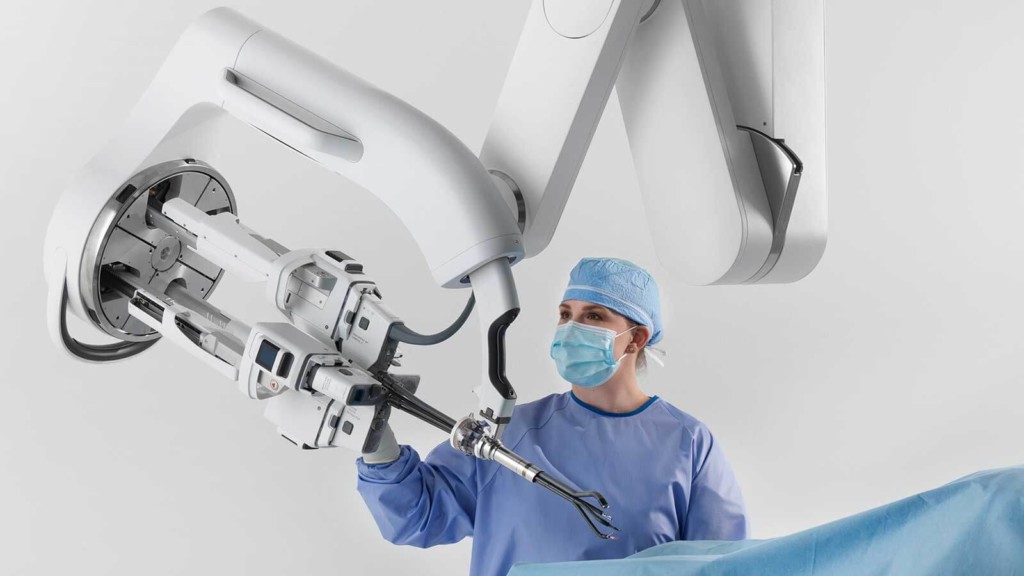Calls for Ukraine
Calls for Europe
Calls for USA
Today, surgery remains the main and one of the most effective methods of prostate cancer treatment. Surgery is indicated if the tumor has not spread beyond the prostate gland. In this case, patients have a very favorable long-term prognosis.
In metastatic tumors, good results can still be achieved with radiation, hormonal and targeted therapy. The effectiveness of cancer vaccines in the treatment of cancer is being actively studied. Provenge, for example, was the first vaccine to receive US FDA approval for the treatment of prostate cancer. However, not many patients know that Ukraine has developed its own antitumor vaccines. Treatment with them is no less effective and at the same time much more affordable than foreign counterparts.
Returning to prostate cancer surgery, it is worth noting that at the moment there are a number of operations that are used for effective and safe removal of the tumor.
The most common treatment is radical prostatectomy. It involves the complete removal of the prostate gland, sometimes with areas of surrounding tissue. In some cases, regional (nearby) lymph nodes may also be removed.
Prostatectomy can be performed using several surgical techniques. With open surgery, access to the cancerous focus is carried out through one large incision. This tactic is quite traumatic. However, it has its own advantages. The extensive incision allows the doctor to visually assess the prostate tissue and control their actions.
In laparoscopic radical prostatectomy, the surgeon inserts a laparoscope equipped with a video camera and miniature surgical instruments into the patient’s abdomen. To do this, it is enough to make several small punctures in the abdominal wall. The surgeon can follow his actions on the screen of the computer monitor, to which the image from the video camera of the laparoscope is transmitted. Due to the multiple zoom in the operating field, the doctor can operate with very high precision. The benefits of the minimally invasive technique include:
One type of laparoscopic technique is robotic prostatectomy. This is an innovative technology that has taken prostate cancer surgery to a new level.

Robotic or robot-assisted prostatectomy is a surgical intervention that is performed using a Da Vinci medical robot. In most cases, this is a nerve-sparing procedure that minimizes prostatectomy complications such as urinary incontinence and erectile dysfunction.
Quick facts about nerve-sparing robotic prostate surgery:
The prostate gland is surrounded by small nerve plexuses that are responsible for sexual function. If the tumor has spread to the nerves, it is almost impossible to remove the prostate without damaging them. However, if the neoplasm is localized within the prostate, there is the possibility of a nerve-sparing operation.
Important! Patients with locally invasive or metastatic cancer, morbid obesity, bleeding tendency, or severe heart disease are not candidates for nerve-sparing robotic prostatectomy.
The operation on the Da Vinci robot is performed under general anesthesia. Several small incisions (no more than 1 cm) are made in the patient’s abdominal wall. Trocars (ports) are inserted into them – special devices that are needed for the introduction of surgical instruments.
The abdominal cavity is filled with carbon dioxide to increase the amount of working space for the surgeon. Sitting at the console, the doctor controls several multi-jointed robotic arms. They exactly repeat the movement of the surgeon’s hands, but at the same time they can rotate 360 degrees and operate with unsurpassed accuracy.
The endoscope camera transmits a multiplied three-dimensional image of the surgical field with high resolution to the monitor screen. The surgeon separates the prostate gland from the bladder and urethra, preserving the surrounding fine nerve plexuses. This allows patients to maintain normal urinary and erectile function after surgery.

The operation is performed through one small incision. Due to its minimal invasiveness, it is more like an outpatient procedure than a full-fledged surgical intervention. Single port prostatectomy is associated with a lower risk of complications and pain during recovery. It does not leave a noticeable scar, and patients can return home the same day.
Da Vinci® Xi™ – one of the latest models of robotic installations, which has one robotic arm and allows one-port operations (through one small incision). In comparison, previous generations of Da Vinci units, which are still used for prostatectomy, are equipped with four robotic arms. Accordingly, for the operation it is necessary to make 5 small incisions in the abdominal wall.
A key feature of single port surgery is that this technique allows the surgeon to manipulate in a small cavity called the extraperitoneal space. With previous da Vinci models, the surgeon manipulates the entire abdominal cavity, so there is always a risk of bowel injury. With single-port surgery, this risk is reduced to almost zero.
Restriction of the operating field to the extraperitoneal space significantly reduces the invasiveness of the operation. Therefore, patients can return home just a few hours after surgery.
Radical prostatectomy is a very complex operation that requires a high level of technical precision. The prostate is surrounded by nerves and structures that are critical to maintaining normal urination and sexual function. Possible complications of prostatectomy can significantly reduce the quality of life of patients, so many of them are looking for ways to avoid them.
Fortunately, there have been significant positive developments in the field of prostate surgery in recent years. The use of minimally invasive techniques, high-tech robotic installations, as well as modern methods of preoperative imaging made it possible to reduce the risk of prostatectomy complications to a minimum.
In addition, studies have shown that surgeons who regularly perform radical removal of the prostate have fewer postoperative complications than those who perform these operations less frequently. Therefore, when choosing a clinic, preference should be given to large multidisciplinary centers that have departments specializing in the surgical treatment of prostate cancer. Among the most in demand and popular medical centers abroad are:
The cost of prostatectomy depends on the method of the operation, the pricing policy of the clinic, as well as the volume and complexity of the surgical intervention. To find out more about the surgical treatment of prostate cancer, call one of the phone numbers listed on the website or fill out the online form. The medical coordinator will contact you as soon as possible. He will help you choose a clinic and a doctor for the operation, taking into account your personal needs and wishes.

While prostatectomy remains the gold standard for prostate cancer surgery, like any surgery, it comes with a risk of side effects. In some cases, for example, with a slow development of the malignant process, doctors do not recommend radical treatment, preferring active observation. However, in the case of an aggressive course of cancer, surgery is indispensable.
A second opinion is a service that allows the patient to make sure that they have been given the correct diagnosis and effective treatment. An independent expert reviews the results of the diagnosis, as well as the appointment of the attending physician, and makes his own verdict. Getting a second opinion is especially important if surgery has been scheduled. In many cases, this practice allows you to radically change the chosen treatment tactics and maintain a high quality of life for the patient.
Another advantage of the second opinion service is the opportunity to get additional information about your disease and the chosen treatment regimen. Patients who have been recommended radical prostatectomy should ask their doctor at least three questions:
Medical coordinators of the MedTour company cooperate with a large number of medical institutions and doctors in Ukraine and abroad. Fill out the online form and they will recommend you the best independent experts in the field of prostate cancer treatment.
Sources of: cancer.caen pcf.org yalemedicine.org cancer.org mskcc.org
Please rate the work of MedTour
